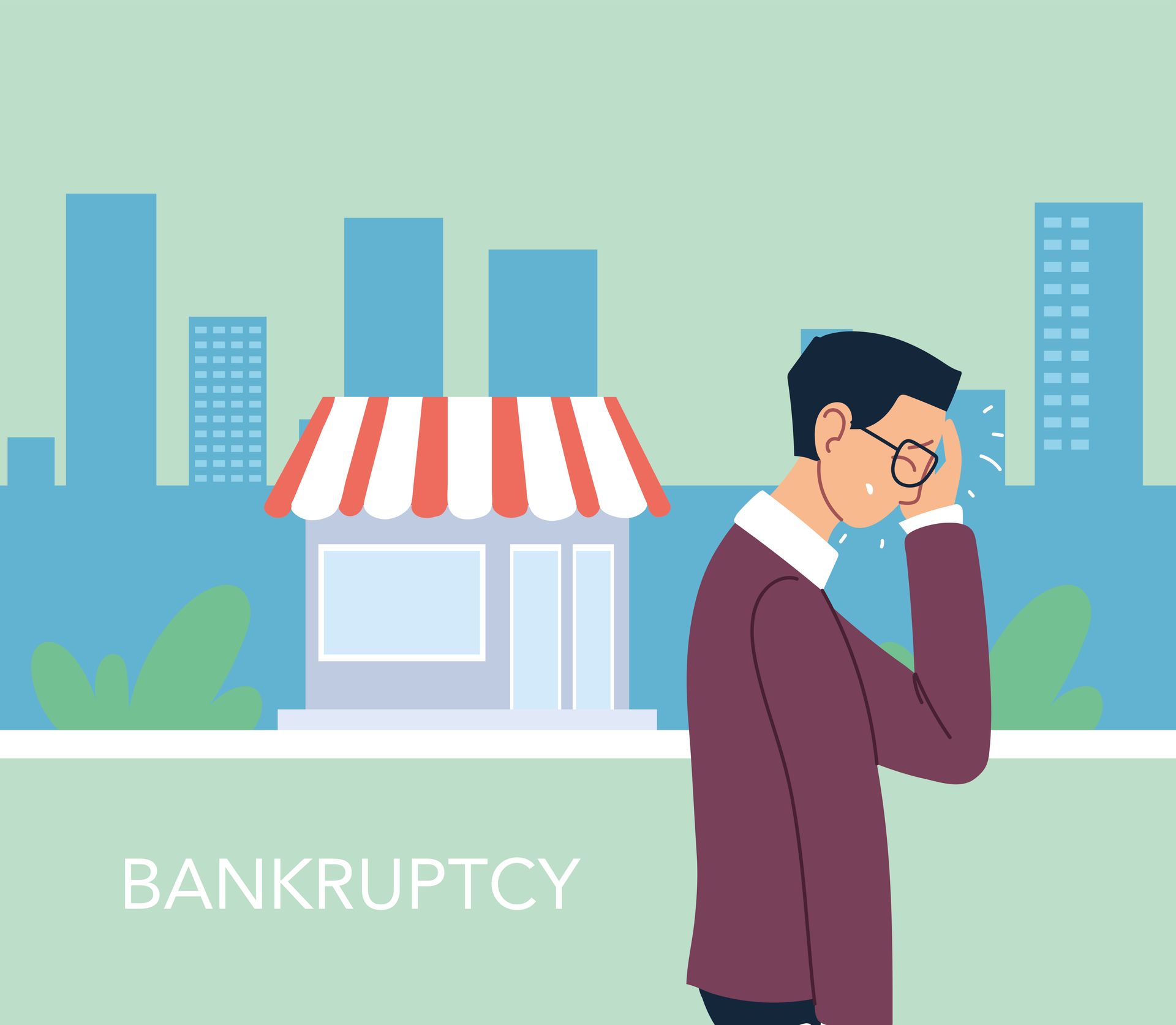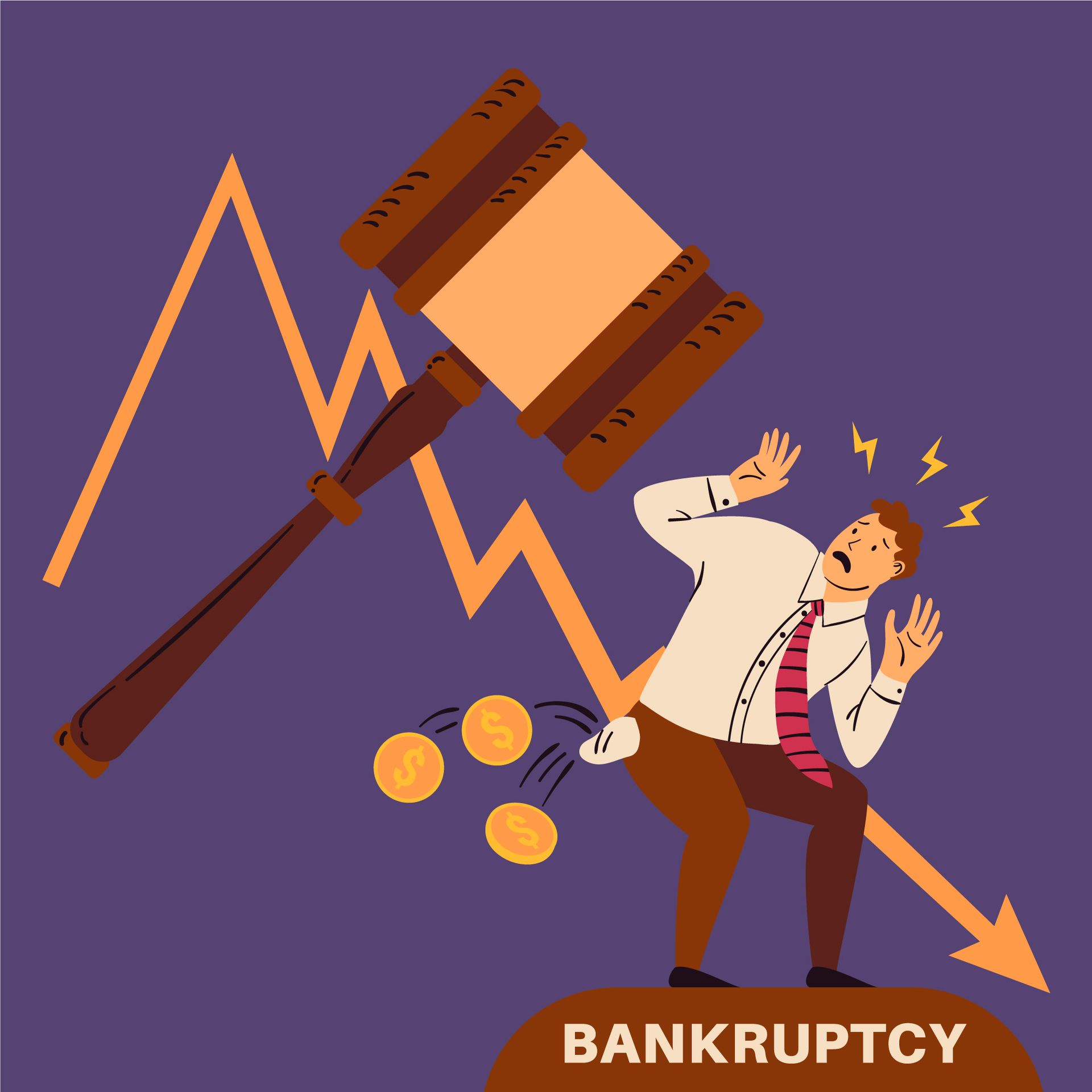Bankruptcy Myths Debunked: Separating Fact from Fiction
Eight of The Most Common Bankruptcy Myths
The idea of bankruptcy is overwhelming, especially with the many misconceptions floating around. As experienced bankruptcy attorneys, we want to dispel these misconceptions and provide clear, factual information. This blog post will address some of the most common bankruptcy myths and hope to offer some clarity and peace of mind to those considering this important financial decision.
Understanding Bankruptcy Myths
Bankruptcy and its effects are frequently misunderstood. This often leads to fear and hesitation, especially for some people who might benefit most from it. Below, we'll debunk eight of the most common bankruptcy myths. Our intent is to help people make an informed decision about whether it might be worth filing for bankruptcy protection.
Myth 1: Filing for Bankruptcy Means You're a Failure

Fact: Bankruptcy is a legal tool designed to provide relief to individuals and businesses facing insurmountable debt and insolvency. It is not a reflection of personal failure but rather a legal and socially acceptable way to regain financial stability. Many people have had to file for bankruptcy due to unforeseen circumstances such as medical bills, job loss, divorce or economic downturns. This legal tool, adopted from English law, has existed since at least 1705 and its roots go back to biblical times.
Myth 2: You Will Lose Everything You Own
Fact: This is the worst chapter 7 myth. The vast majority of bankruptcy cases are “no asset” cases, meaning that all of the assets owned by the people in those cases are exempt, or protected, by the law. While technically a Chapter 7 bankruptcy allows the liquidation of assets to repay creditors, virtually all of the assets most people own, such as essential items, are exempt. These exemptions usually include your primary residence, car, personal belongings, tools of your trade, and retirement accounts. Each state has its own set of exemptions and most people in Oregon can also use the exemptions set out in the bankruptcy code. As long-time bankruptcy attorneys, we can help you understand what you can keep in Oregon. To learn more about whether all of your belongings are exempt, please call us or use the contact form to set up an appointment to discuss your situation. But it is no myth that many, many cases end with a determination that there are no non-exempt assets to liquidate. This is why they are called a “no assets” case. You get a discharge and a fresh start, but you lose nothing but the debts.
Myth 3: Bankruptcy Permanently Ruins Your Credit
Fact: While bankruptcy impacts your credit and credit score, it is not a permanent impact. In many cases, people see their credit scores improve shortly after their bankruptcy because they are no longer burdened by overwhelming debt. While it is true that bankruptcy is on your consumer credit report for ten years, with active steps to rebuild your credit and responsible financial management, most people find that they can get back to reasonably good credit in about two and a half years.
Myth 4: You Will Never Be Able to Get Credit Again

Fact: This is another common bankruptcy myth. Naturally, right after filing for bankruptcy, you may find it challenging to get credit. However, many lenders are willing to extend credit to individuals who have completed bankruptcy, but usually with provisions for the debt to be secured and possibly at higher interest rates. But secured credit cards and loans can also help rebuild your credit history. If you are not currently buying your home, rebuilding credit is very important as it is necessary to qualify for a mortgage. You can learn more on our Foreclosure Prevention Attorney page.
Myth 5: Only Financially Irresponsible People File for Bankruptcy
Fact: Most people who file for bankruptcy are financially responsible individuals who have encountered significant life challenges. Uninsured or underinsured medical expenses, divorce, medical emergencies, job loss, and business failure due to economic downturn are common reasons for filing. Often people who have had their finances under control for years can be hit with an unexpected setback. Bankruptcy provides a way to a fresh start for those who have experienced financial setbacks and find that their finances are now beyond their control.
Myth 6: All Debts Are Wiped Out in Bankruptcy
Fact: While bankruptcy can discharge most types of debt, not all debts are eliminated. Certain obligations, such as child support, alimony, and court fines are typically non-dischargeable. Obligations such as student loans and certain tax debts are dischargeable under certain conditions. As experienced bankruptcy attorneys, we can help you understand which of your debts can and which, if any, cannot be discharged.
Myth 7: You Can Only File for Bankruptcy Once
Fact: There are limits on how often you can file for bankruptcy, but it is always possible to file again if you experience a later economic hardship. The time between filings depends on the type of bankruptcy previously filed and the type of bankruptcy you wish to file now. For example, you must wait eight years after filing a bankruptcy which you received a discharge under Chapter 7 before filing for Chapter 7 again. However, you only have to wait four years before you can file for Chapter 13. If you need bankruptcy protection a second time due to new medical bills, for example, please contact us and we can explain your options.
Myth 8: Filing for Bankruptcy Is Complicated and Costly

Fact: While the bankruptcy process involves paperwork and legal proceedings, it is manageable with the help of an experienced bankruptcy attorney. The cost of filing for bankruptcy can vary, but we offer payment plans and affordable rates to ensure you get the help you need. In addition, the benefits of immediate protection from debt collection and the long-term financial benefits of being able to rebuild your credit in just a matter of years definitely outweighs the cost of the bankruptcy.
Speak With an Experienced Bankruptcy Attorney About Your Options and Get Answers to Any Questions You Might Have
Filing for bankruptcy is a major decision, but it doesn't have to be shrouded in mystery and misconceptions. We offer a free consultation so that you can learn about your options in bankruptcy and how it would work for you, without any pressure to make a decision. We usually schedule an hour so that there isn’t any time pressure and to give us plenty of time to understand your individual circumstances. We can do an exploratory, fact-finding phone conference and lay out the pros and cons without any need to make an immediate decision.
If you would like more details and want to know how bankruptcy would work in your personal situation, please contact us to set up a free initial consultation.
Bankruptcy Myths FAQ's
Will bankruptcy stop wage garnishments?
Yes, filing for bankruptcy halts wage garnishments and other collection activities immediately. In most situations, it will also allow you to recover funds taken in the 90 days before you file your bankruptcy case.
How long does a bankruptcy stay on my credit report?
A bankruptcy remains on your credit report for ten years from the filing date. However, with active efforts to rebuild credit and responsible credit behavior, most people find that they can rebuild their credit in two and a half to three years.
Can bankruptcy help with medical debt?
Absolutely. There is almost never a problem with discharging medical debt. Unfortunately, uninsured and underinsured medical expenses are one of the most common reasons why people have to file more than one bankruptcy.








Share On: